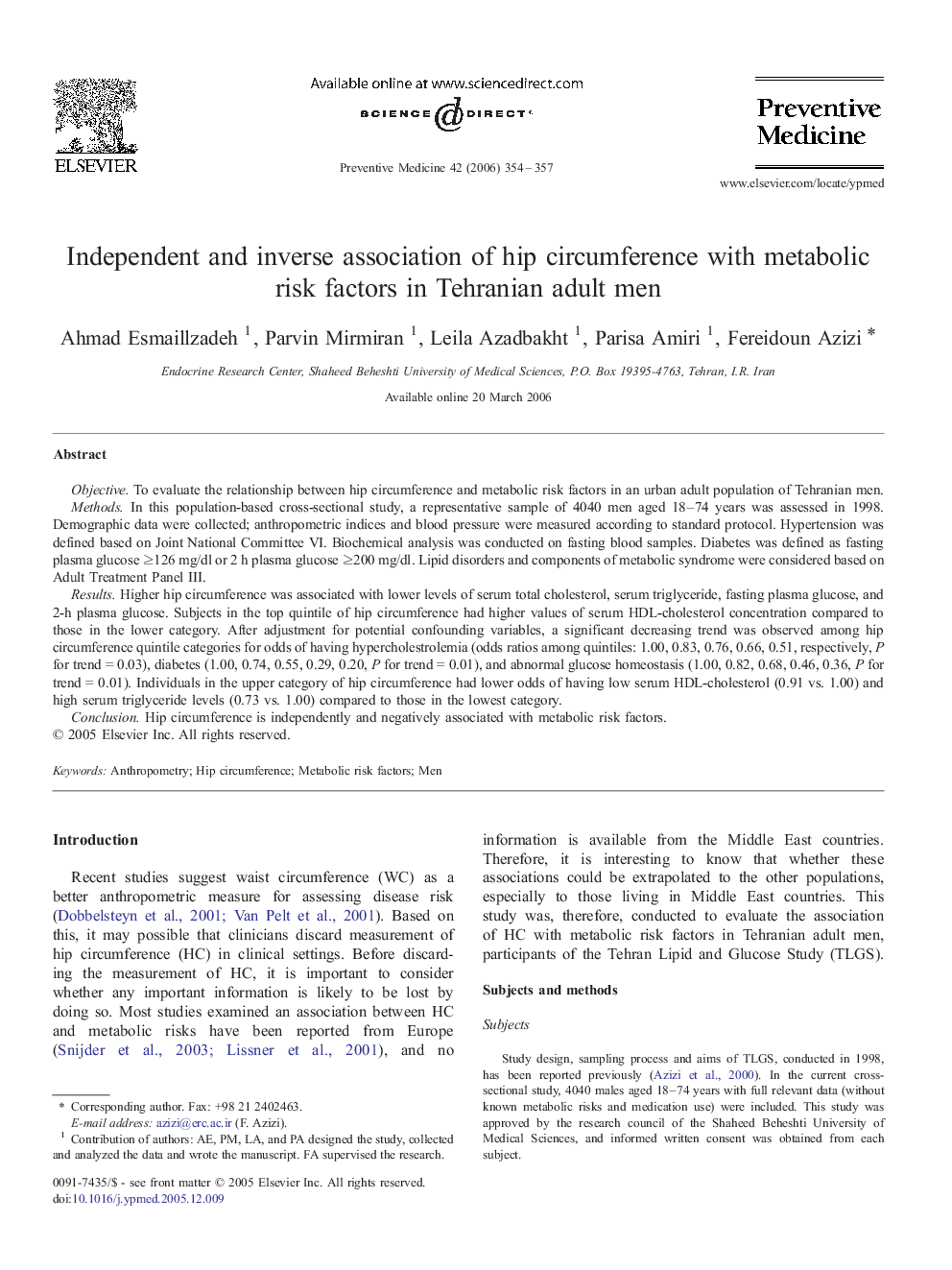| Article ID | Journal | Published Year | Pages | File Type |
|---|---|---|---|---|
| 3102220 | Preventive Medicine | 2006 | 4 Pages |
ObjectiveTo evaluate the relationship between hip circumference and metabolic risk factors in an urban adult population of Tehranian men.MethodsIn this population-based cross-sectional study, a representative sample of 4040 men aged 18–74 years was assessed in 1998. Demographic data were collected; anthropometric indices and blood pressure were measured according to standard protocol. Hypertension was defined based on Joint National Committee VI. Biochemical analysis was conducted on fasting blood samples. Diabetes was defined as fasting plasma glucose ≥126 mg/dl or 2 h plasma glucose ≥200 mg/dl. Lipid disorders and components of metabolic syndrome were considered based on Adult Treatment Panel III.ResultsHigher hip circumference was associated with lower levels of serum total cholesterol, serum triglyceride, fasting plasma glucose, and 2-h plasma glucose. Subjects in the top quintile of hip circumference had higher values of serum HDL-cholesterol concentration compared to those in the lower category. After adjustment for potential confounding variables, a significant decreasing trend was observed among hip circumference quintile categories for odds of having hypercholestrolemia (odds ratios among quintiles: 1.00, 0.83, 0.76, 0.66, 0.51, respectively, P for trend = 0.03), diabetes (1.00, 0.74, 0.55, 0.29, 0.20, P for trend = 0.01), and abnormal glucose homeostasis (1.00, 0.82, 0.68, 0.46, 0.36, P for trend = 0.01). Individuals in the upper category of hip circumference had lower odds of having low serum HDL-cholesterol (0.91 vs. 1.00) and high serum triglyceride levels (0.73 vs. 1.00) compared to those in the lowest category.ConclusionHip circumference is independently and negatively associated with metabolic risk factors.
